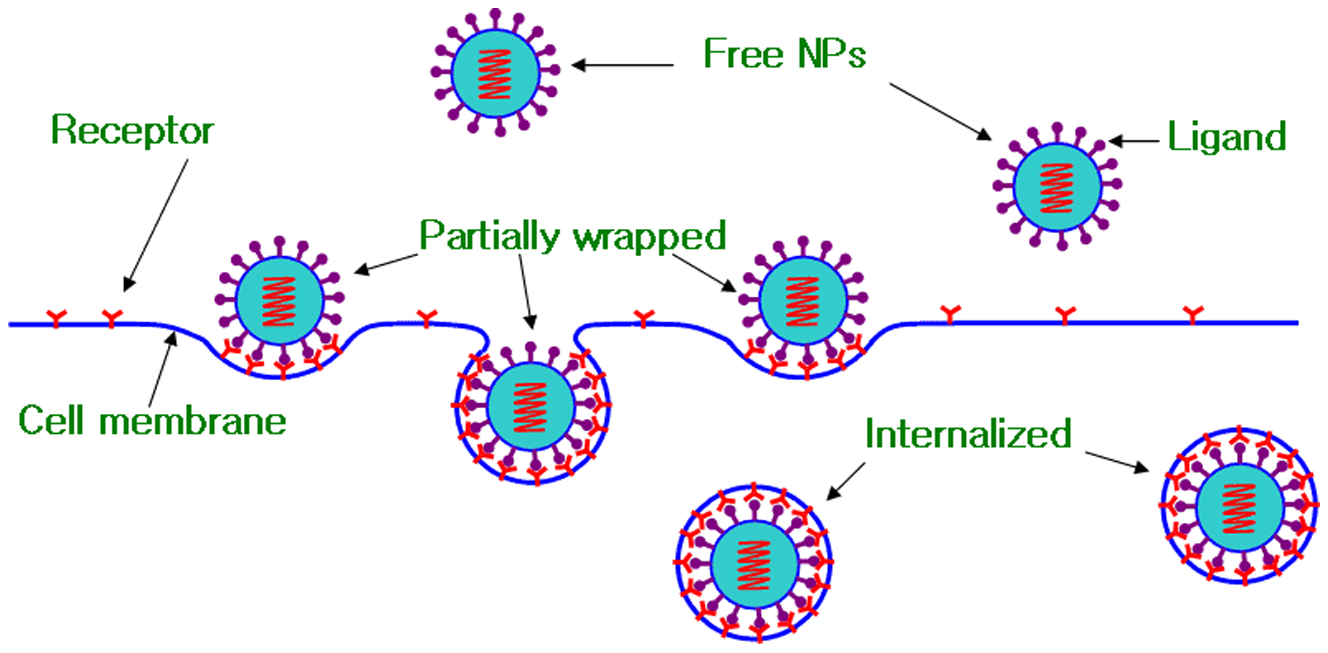Worth A Thousand Words
In my last post, I shared with you an image of a minute fossil found in Southern China. For this post, I’m continuing with the “small” theme and am going even smaller.
The image for this week comes from a paper entitled, Virus-Inspired Design Principles of Nanoparticle-Based Bioagents. In the manuscript, the authors attempt to establish principles for the biomimetic design of nanoparticles with a high uptake rate. Designing nanoparticles with a high uptake rate is an important factor when it comes to assessing the effectiveness of NP-based therapeutics.
Below is Figure 3 of the manuscript, which is a diagram of how a cell uses receptors to ingest nanoparticles.
From the Abstract:
The highly effectiveness and robustness of receptor-mediated viral invasion of living cells shed lights on the biomimetic design of nanoparticle(NP)-based therapeutics. Through thermodynamic analysis, we elucidate that the mechanisms governing both the endocytic time of a single NP and the cellular uptake can be unified into a general energy-balance framework of NP-membrane adhesion and membrane deformation. Yet the NP-membrane adhesion strength is a globally variable quantity that effectively regulates the NP uptake rate. Our analysis shows that the uptake rate interrelatedly depends on the particle size and ligand density, in contrast to the widely reported size effect. Our model predicts that the optimal radius of NPs for maximal uptake rate falls in the range of 25–30 nm, and optimally several tens of ligands should be coated onto NPs. These findings are supported by both recent experiments and typical viral structures, and serve as fundamental principles for the rational design of NP-based nanomedicine.

